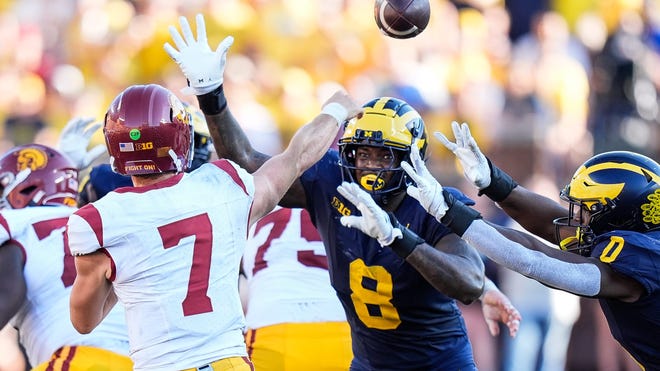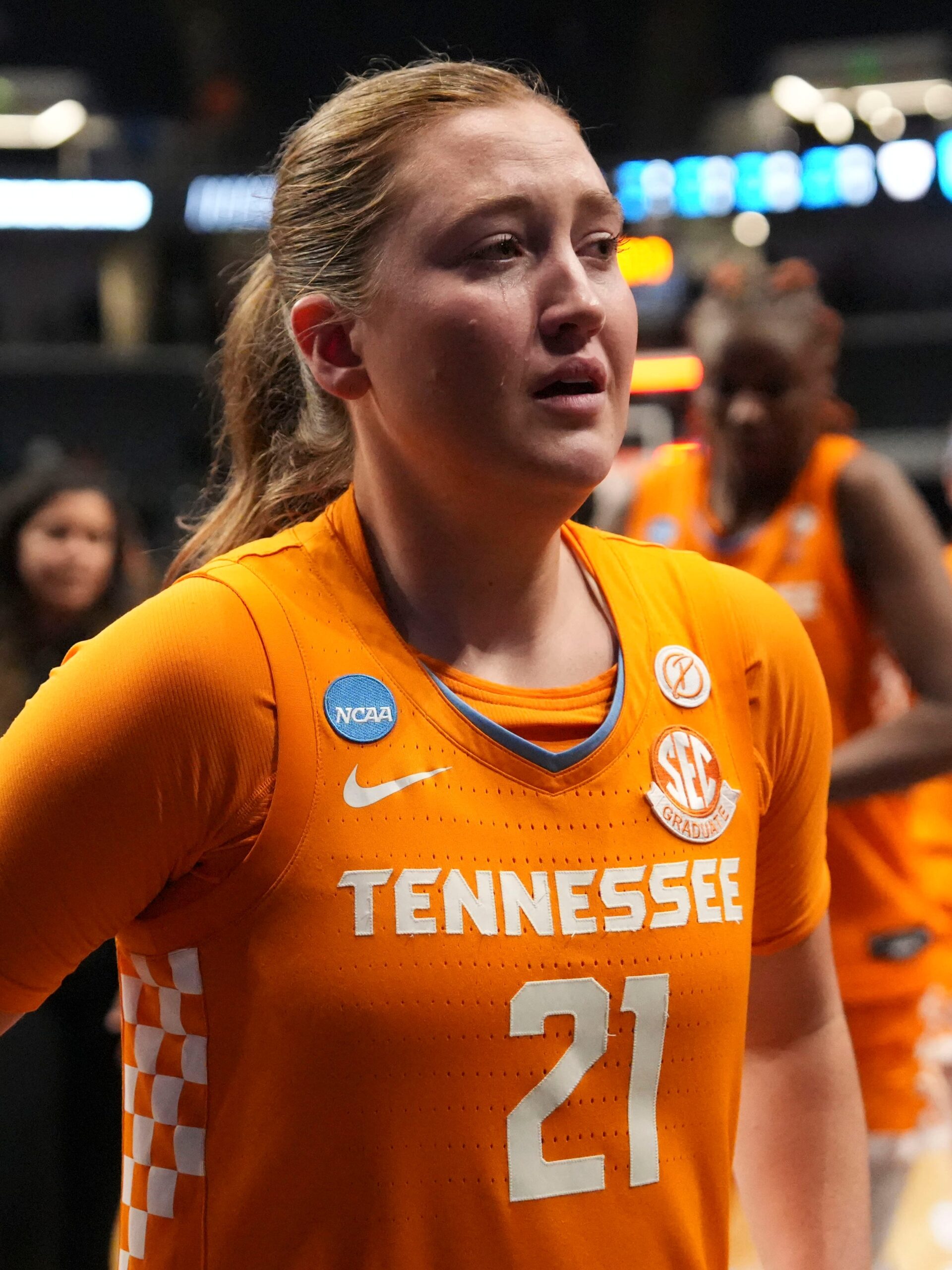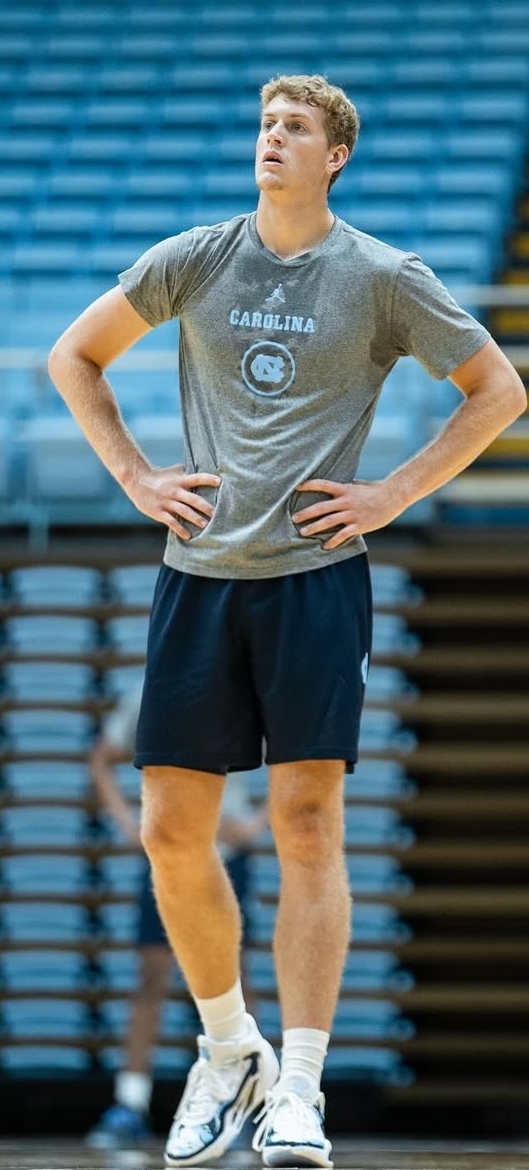In today’s college football landscape, where high-octane passing offenses dominate, the role of the dedicated pass-rusher has never been more critical. As schemes evolve and quarterbacks are asked to do more through the air, defenses must adjust accordingly, and one of the most effective ways to disrupt an offense is by applying consistent pressure on the quarterback.
The rise in importance of edge rushers and disruptive defensive players is evident across both the college and professional levels. Players like Micah Parsons and Abdul Carter of Penn State have become prototypes of the modern hybrid linebacker-defensive end — athletic, versatile, and relentless in their pursuit of the quarterback. They symbolize a growing trend in college football where defenses are built around impact pass-rushers. Parsons, in particular, set the tone for this evolution, while Carter is poised to continue that legacy.
In the NFL, the financial value of these players further emphasizes their worth. Former Wisconsin standout and current Pittsburgh Steelers star T.J. Watt recently became the highest-paid non-quarterback in league history. His consistent ability to produce double-digit sack seasons makes him a cornerstone of Pittsburgh’s defensive identity, showcasing the premium placed on elite pass-rushers.
This analysis builds upon previous Big Ten positional breakdowns for the 2025 season. While defensive lines have already been evaluated as a whole, it’s essential to zoom in on the pass-rushing component specifically. This ranking isolates and evaluates each Big Ten program’s top pass-rushing units — regardless of how they are aligned schematically.
It’s important to note that defensive schemes vary significantly across the conference. Some teams rely on a traditional four-man front with classic defensive ends, while others prefer a three-man front that features stand-up linebackers as the primary pressure sources. Therefore, this ranking is based on a projection: Which schools are most likely to consistently collapse the pocket and force mistakes from opposing quarterbacks?
Moreover, with the ever-growing transfer portal, team dynamics have changed dramatically. Many pass-rushing units in the Big Ten this year have been heavily influenced by incoming transfers — some bringing elite production from smaller schools, others stepping up from backups at blue-blood programs looking for a bigger role. While these additions bring promise, they also introduce uncertainty. Some units feature experienced veterans with proven sack numbers, while others are banking on potential and upside.
Within each team’s evaluation, key individuals projected to lead in sack totals are listed as “starters,” though rotational depth and scheme flexibility are also factored into the analysis. These rankings are not solely based on prior production but incorporate expectations for development, coaching fit, supporting cast, and overall ability to generate quarterback pressure throughout the 2025 season.
Ben Kenney, the article’s author, emphasizes that even among highly ranked defensive lines, the quality and threat level of their pass rush can differ drastically. For example, a team may excel in stopping the run but struggle to consistently harass the quarterback. This list helps differentiate those strengths by isolating and comparing each program’s sack-generation potential.
The preview follows a broader positional analysis series that has covered every unit group in the Big Ten — from quarterbacks and running backs to tight ends and offensive lines. With every passing week bringing us closer to kickoff, fans, analysts, and coaching staffs alike are dissecting rosters to find where their teams may have an edge — or where vulnerabilities lie.
As it pertains specifically to pass-rushing, the 2025 season in the Big Ten presents a fascinating mix. There are programs with established sack artists returning for another season. Others are building from scratch, hoping new faces — whether true freshmen, transfers, or converted linebackers — will emerge as game-changers. A few teams rely on system-based pressure, disguising blitzes and utilizing creative alignments, while others count on raw talent and physical dominance to win one-on-one battles.
Ultimately, the goal for every defensive coordinator is the same: disrupt the rhythm of opposing quarterbacks. Whether through edge pressure, interior penetration, or complex blitz packages, the teams that excel at rushing the passer often find themselves in control of games. It shortens drives, creates turnover opportunities, and alters the offensive game plan.
This comprehensive ranking of Big Ten pass-rushing groups is more than just a preseason thought exercise. It’s a glimpse into which teams might have the firepower on defense to match the explosive offenses they’ll face throughout the season. In a conference that now spans 18 schools and stretches across time zones, the battle in the trenches is as important as ever. This ranking aims to highlight the defenses that will lead the way — not just with size and strength, but with speed, intelligence, and an instinct for disruption.
Stay tuned as the full ranking reveals which Big Ten teams sit atop the pass-rushing hierarchy and which ones face major question marks heading into the fall.



